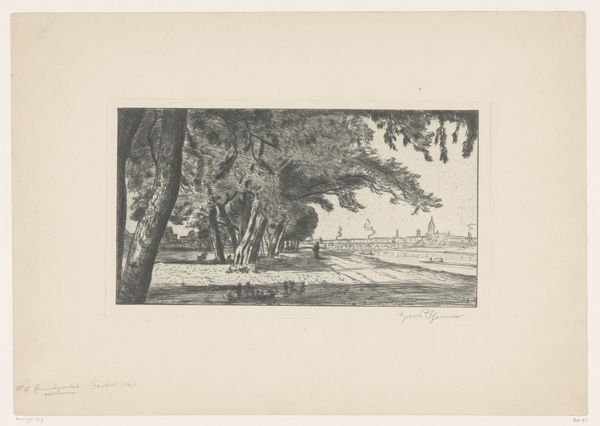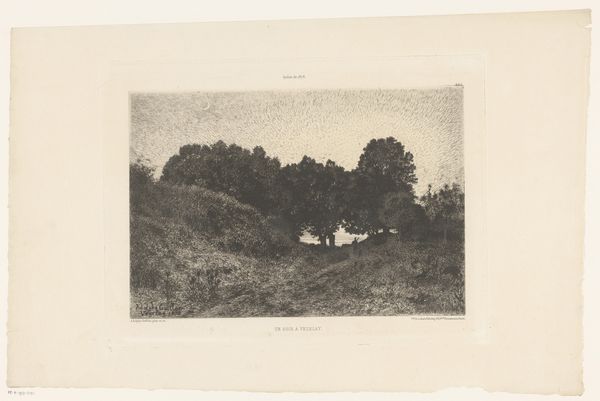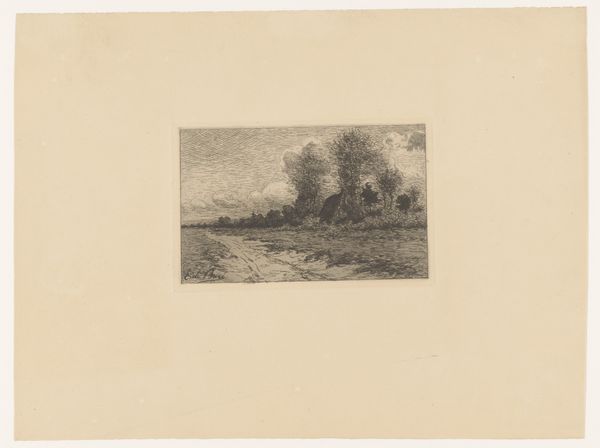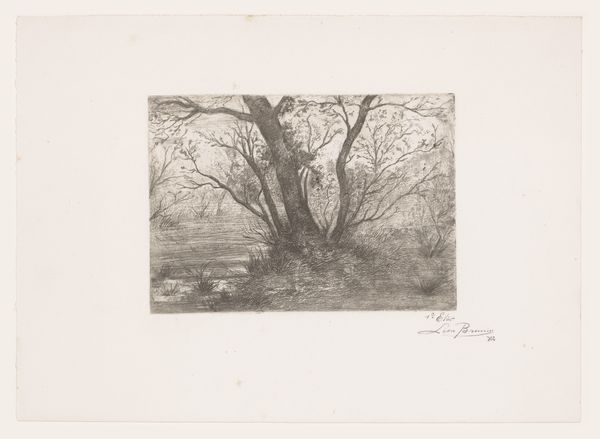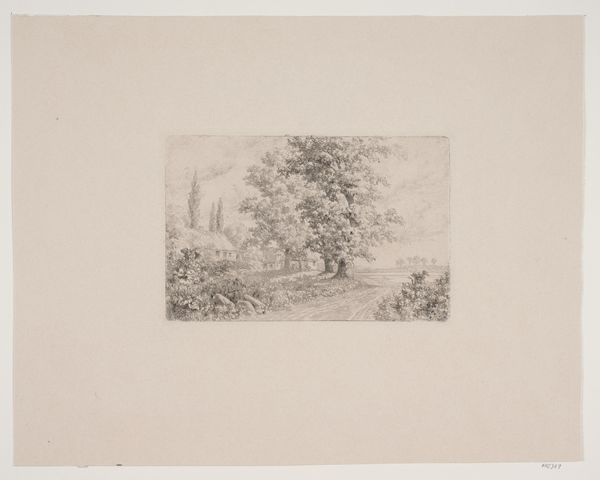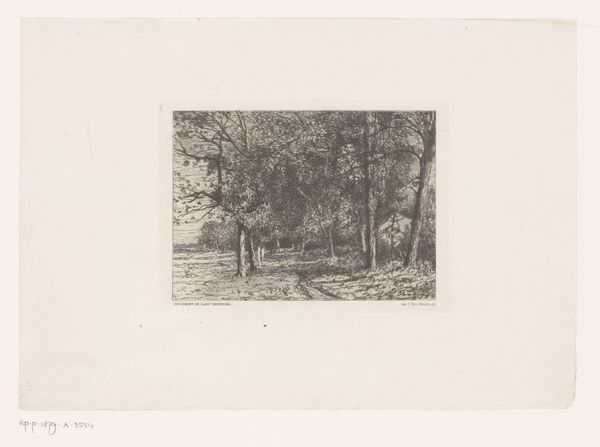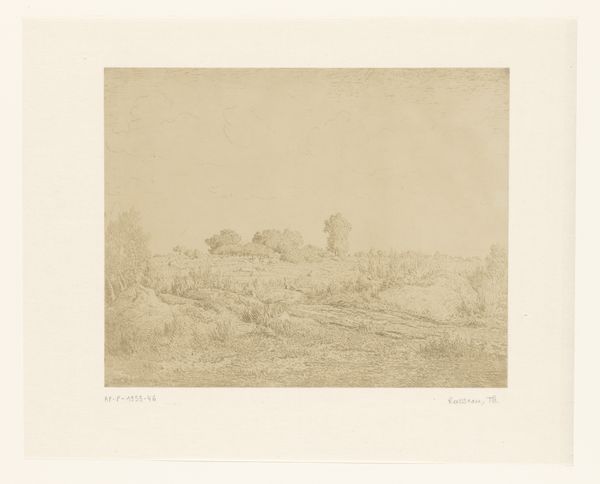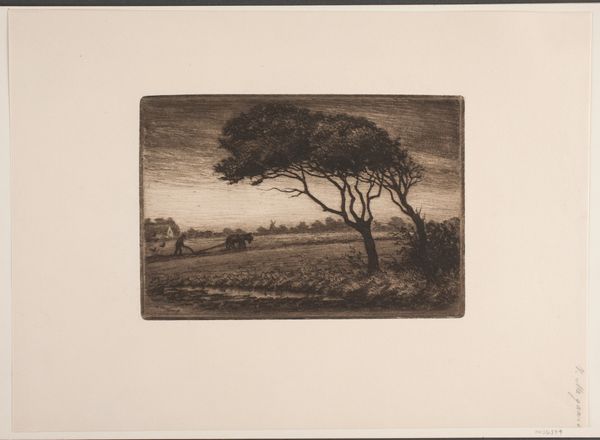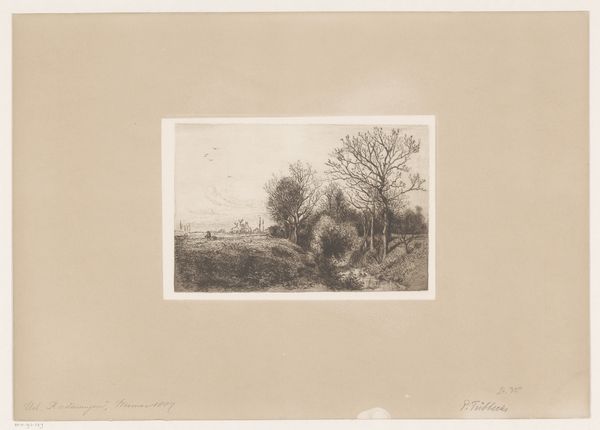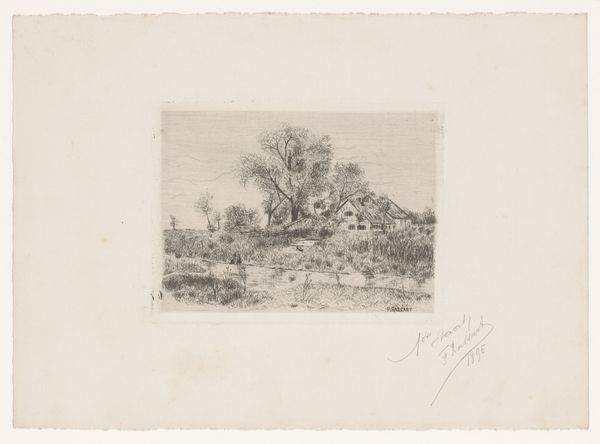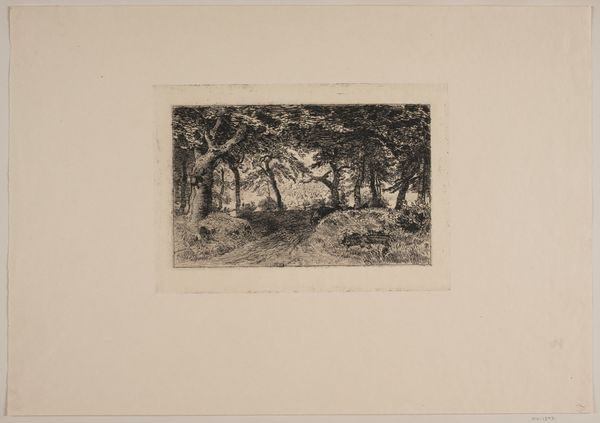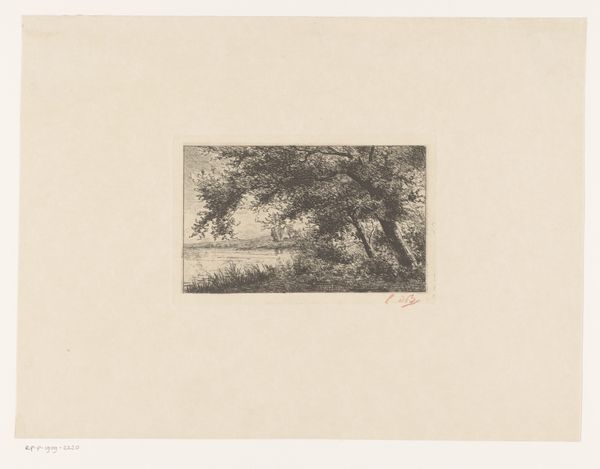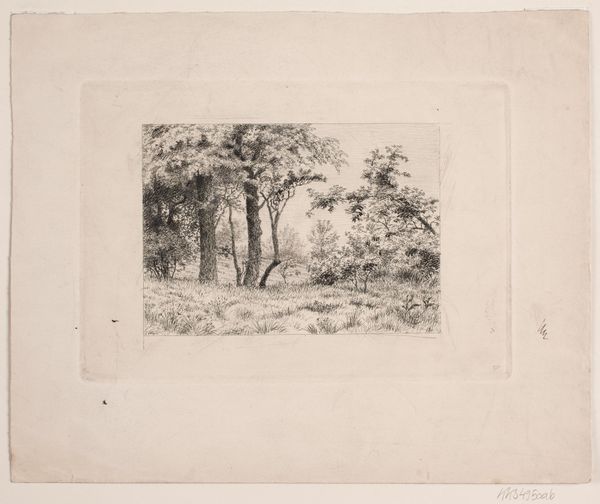
print, etching
# print
#
etching
#
landscape
#
realism
Dimensions: 185 mm (height) x 280 mm (width) (Plademål)
Editor: So, here we have Axel Holm's "I udkanten af Græsted" from 1893. It’s an etching, a print… I’m struck by the quiet stillness of it. It's such a simple scene, almost unremarkable. What can you tell me about how it was received at the time? Curator: Well, consider the Realist movement's aims and reception during this period. Realism moved painting towards representations of everyday life, with special attention given to rural and working-class scenes. Were Danish audiences ready for such intimate depictions? Did artists face institutional pushback, such as lack of funding or exhibit space? What’s notable here, perhaps, isn't necessarily its radical artistic innovation, but how it speaks to the democratizing function of art during a time of social and political upheaval. Editor: So, it's not just *what* he painted, but the *act* of painting such an ordinary landscape that carries weight? It feels almost like a quiet act of defiance. Curator: Precisely! And etchings, prints—they allow for wider distribution, breaking down the elite access to art that existed previously. Who got to own, appreciate and disseminate these images? This also speaks to the public role that art began to assume more openly. Were these kinds of images considered patriotic? Consider the role museums would have had, if any, on elevating artists of Holm’s ilk, versus others. Editor: That makes me wonder if showing everyday scenes was his way of subtly suggesting value in ordinary life and landscapes, in opposition to the establishment? Curator: It could be! Analyzing the market, and how Holm engaged with exhibiting societies and art dealers can tell us more about that potential intention. Also, we must remember how art historians contextualize such works – for example, whether Holm himself took a politically subversive approach in other works and contexts can tell us whether there are indeed intentions beyond aesthetics at play. Editor: It's fascinating how a simple landscape print can open up so many questions about art and its place in society. I'll definitely look into the socio-political scene surrounding this artist! Curator: Indeed, seeing art as part of a broader cultural conversation transforms our understanding.
Comments
No comments
Be the first to comment and join the conversation on the ultimate creative platform.

